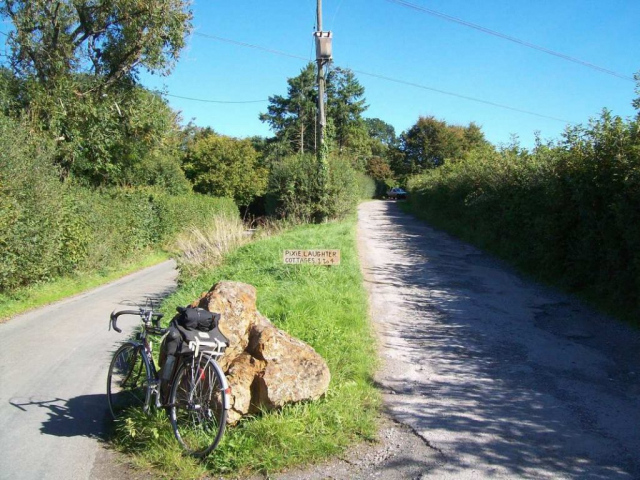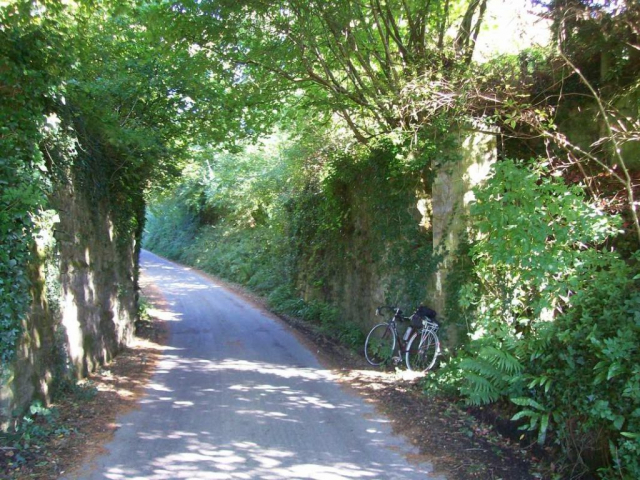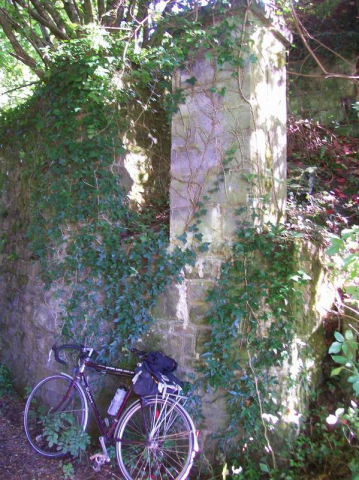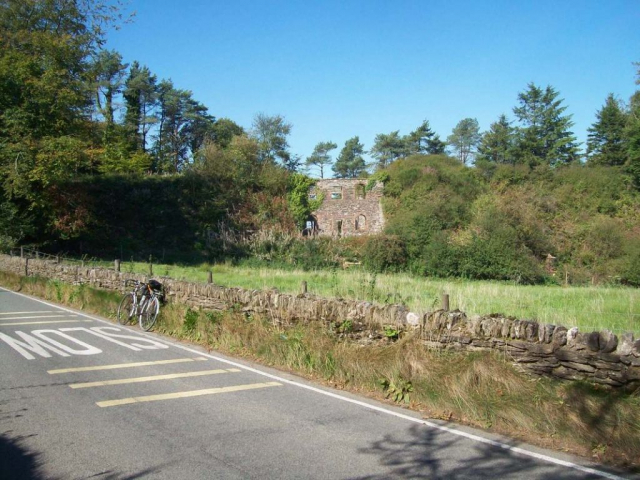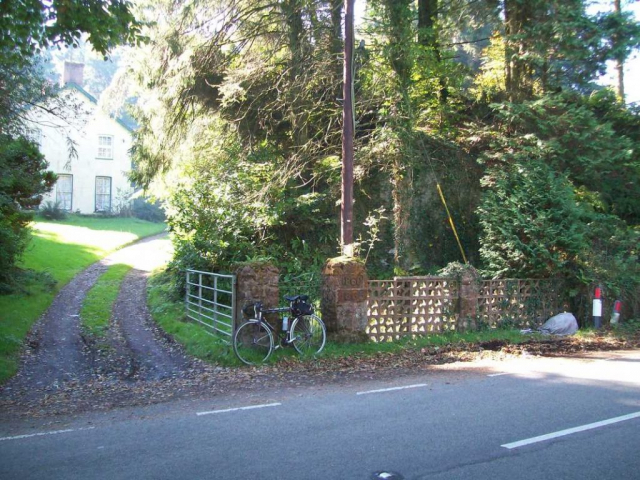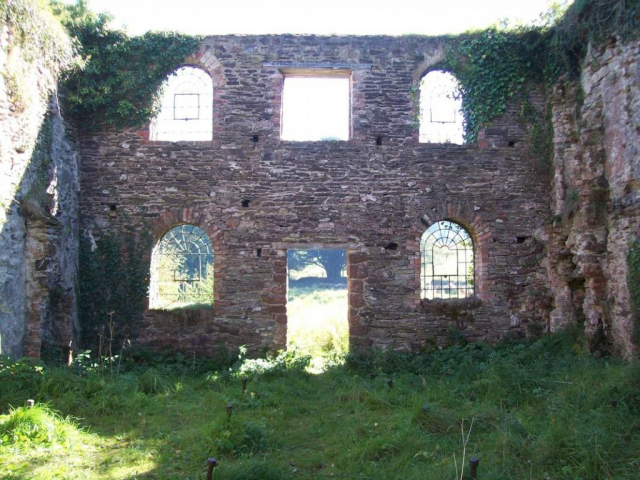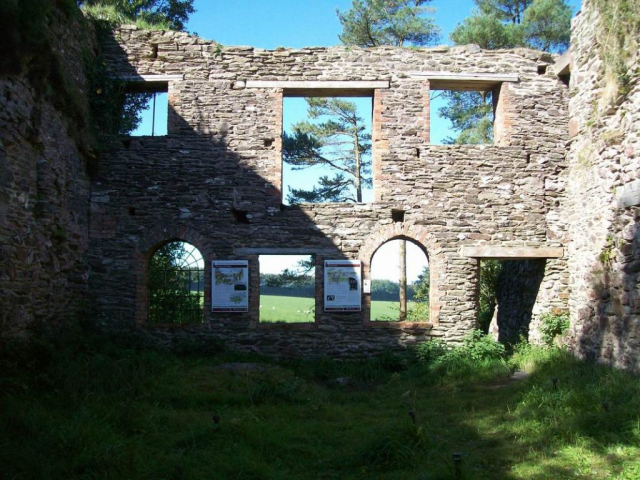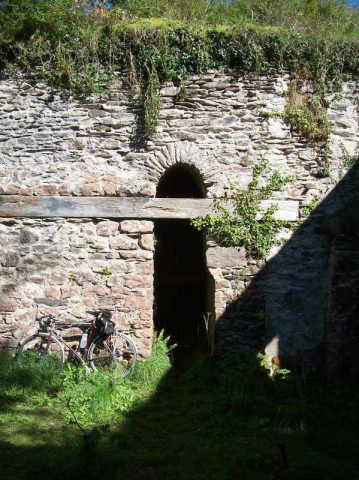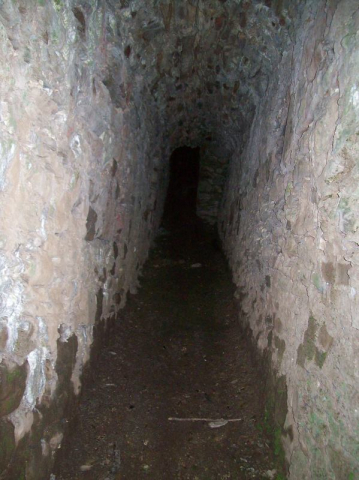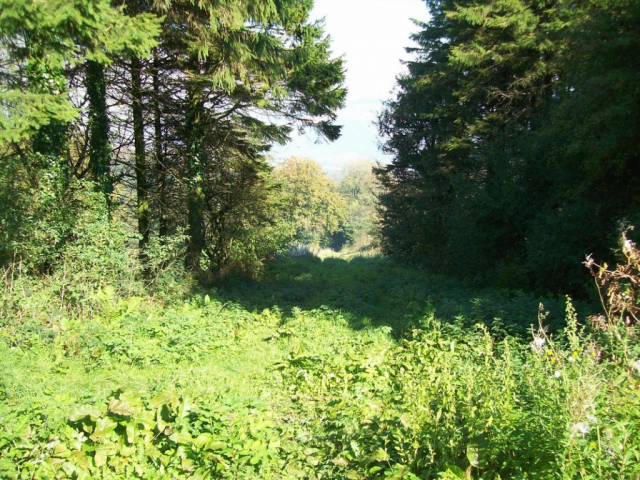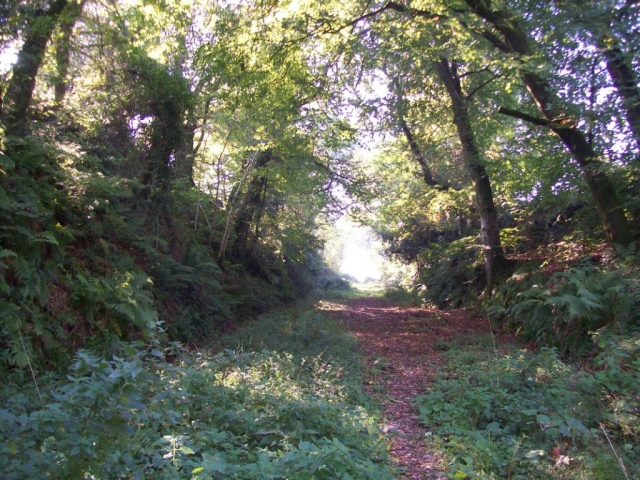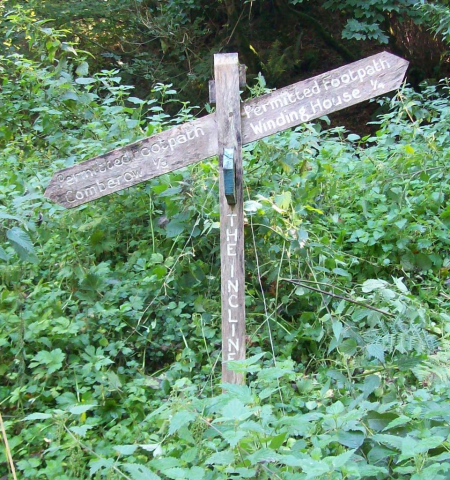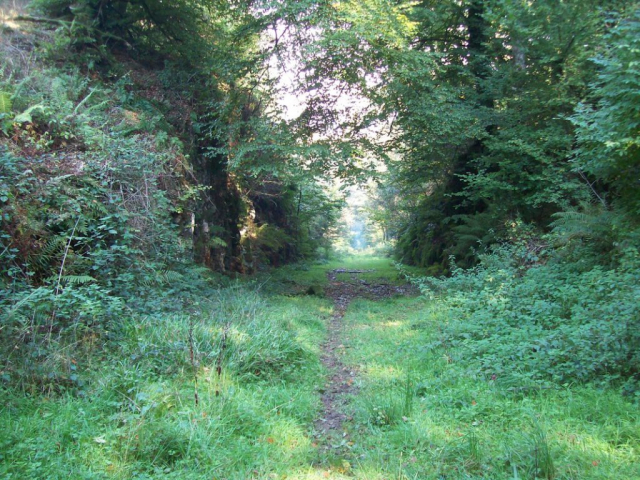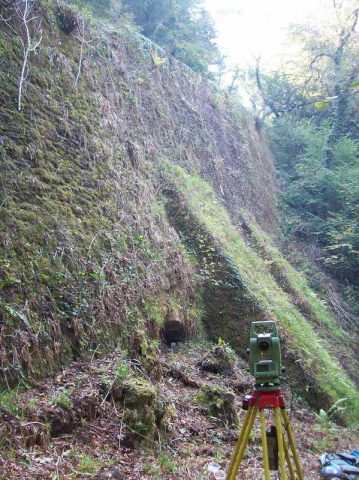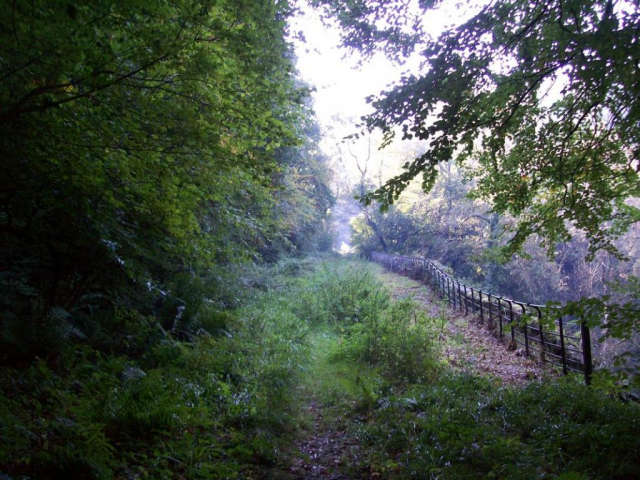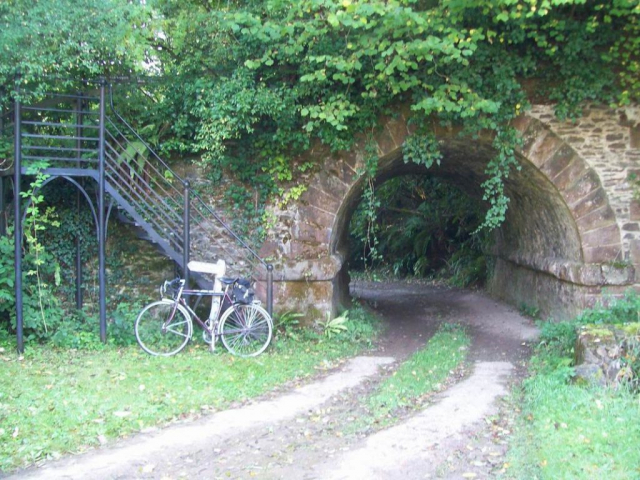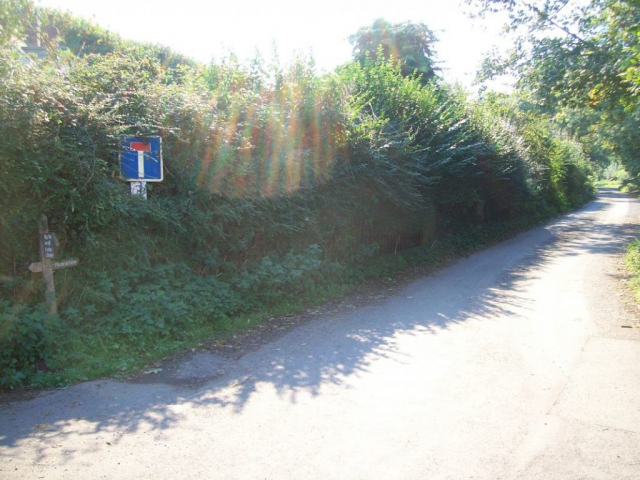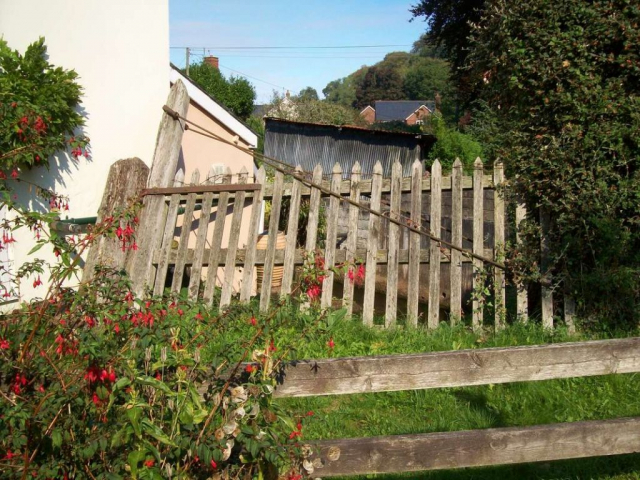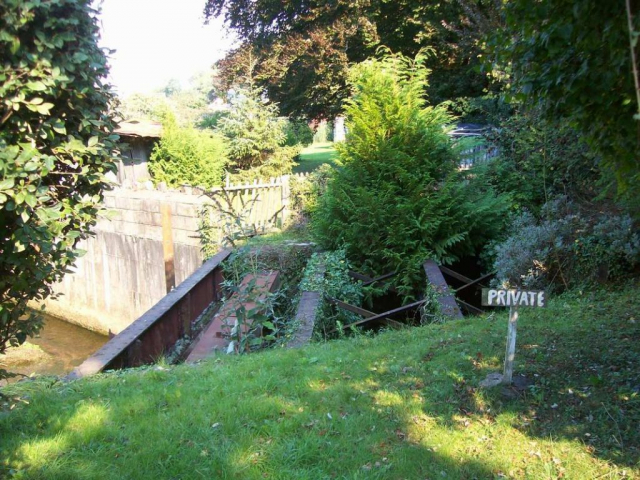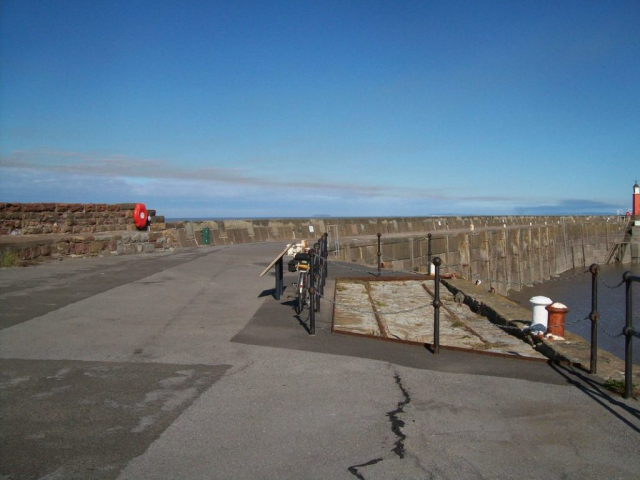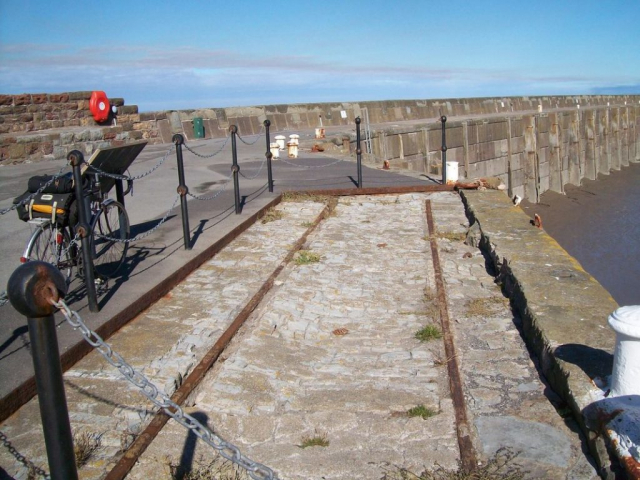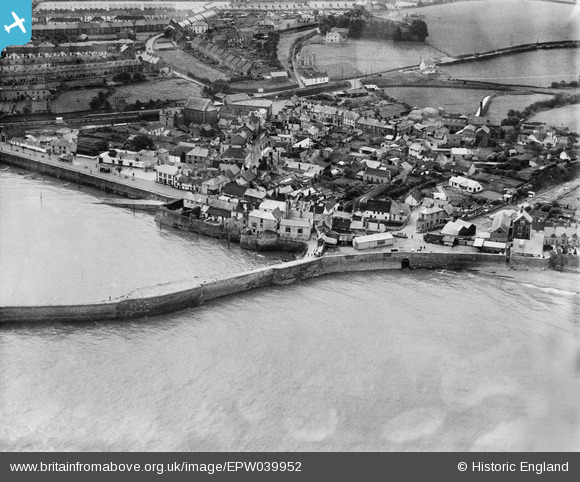A ride which marks the end of the season has for several years been over the hills to the north coast. On Tuesday the scout detrained at Sampford Peverell and took a quiet road through Huntsham and on to Morebath, where he crossed the former Devon & Somerset.
Morebath
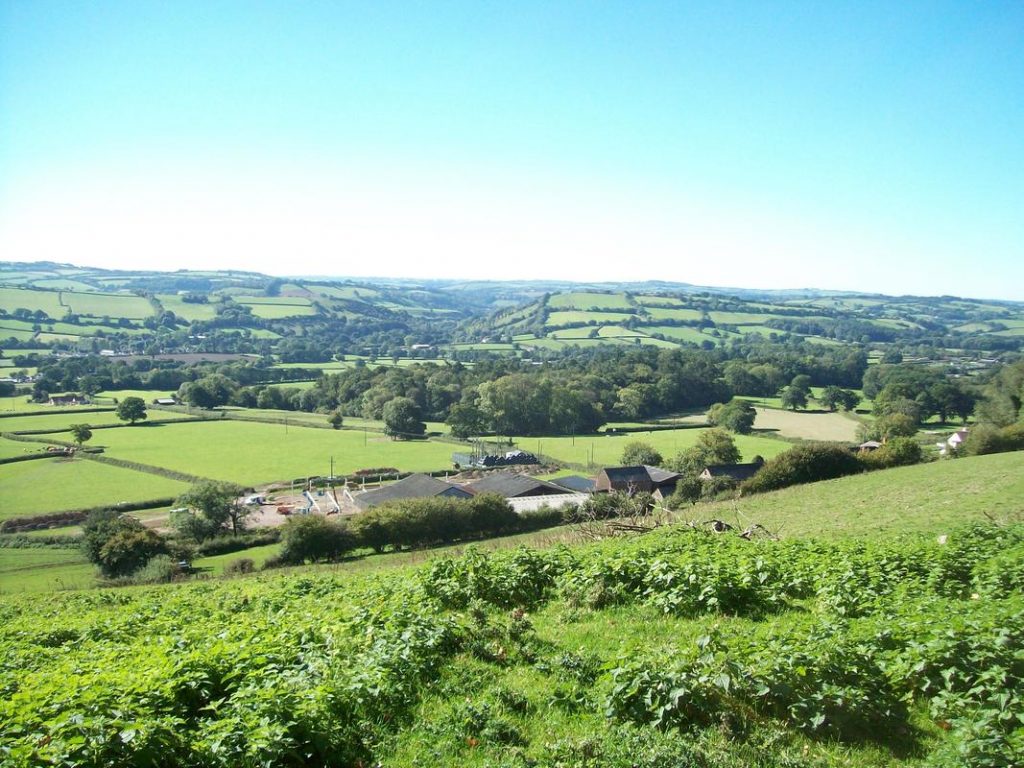
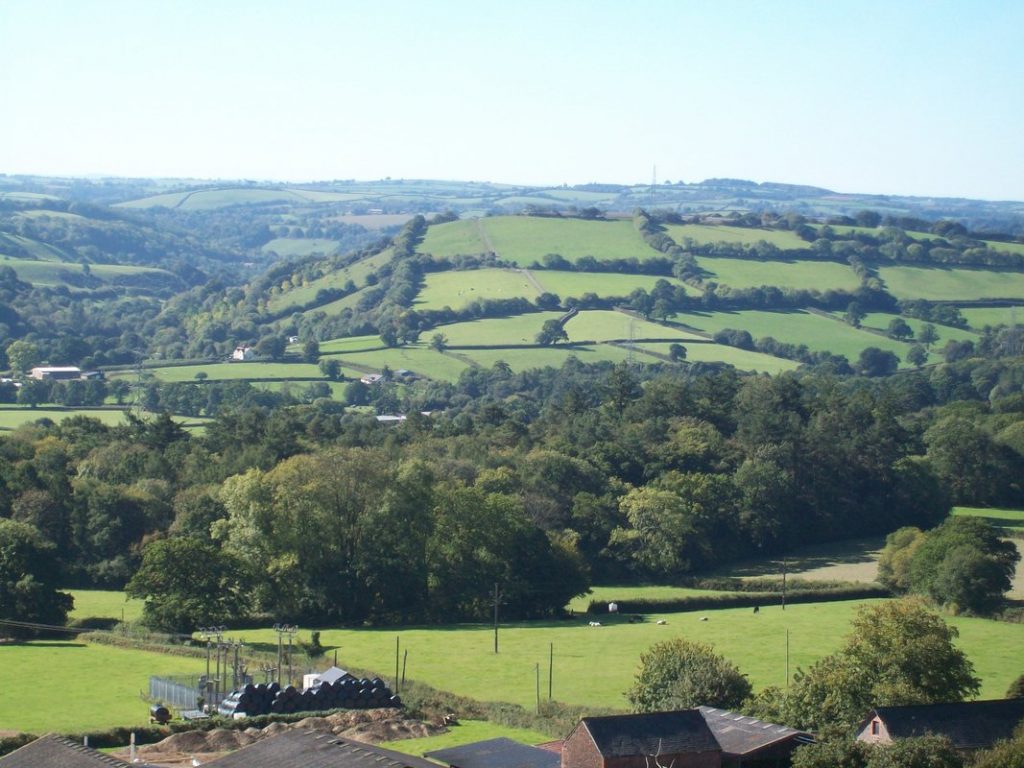
Brendon Hill
The engineer’s cottage was incorporated within the winding house; obviously the dividing wall has long gone.
While there was ore being sent down to Watchet, the incline was self-actuating. When the mines closed, an engine was installed to lift loaded wagons from Comberow, but this was unlikely to have been a substantial affair, there being not much of a future for the railway.
When the scout was last here, ten years ago, Exmoor National Park Authority were about to start clearing the incline and making access easier. It is now in about the same condition as it was then.
The scout observed the “Incline Instructions” and pinned down the front brake on his bike for the 1:4 descent!
The scout chatted to the lady and two chaps who were surveying the retaining wall and remarked that the Exmoor authority must be concerned about allowing public access, of which there did not appear to be much. “How many walkers have you seen today?” he asked. “Just you,” they replied.
At Comberow, somehow the scout failed to pick up the course of the railway, possibly because of forestry operations, and took a circuitous route before joining the line again shortly before it becomes a public road.
Roadwater
Watchet Harbour
Exceeding the life of many small West Country harbours, Watchet remained in commercial use until 2000. Among the many commodities handled was wood pulp for the paper mill. The peak year was not in the 19th Century, when iron ore from the Brendon mines was being shipped: it was 1980, when imports and exports totalled 141,000 tons.
Much of the harbour is now another ghastly marina, which holds not the least interest to the scout or anyone of his persuasion.

